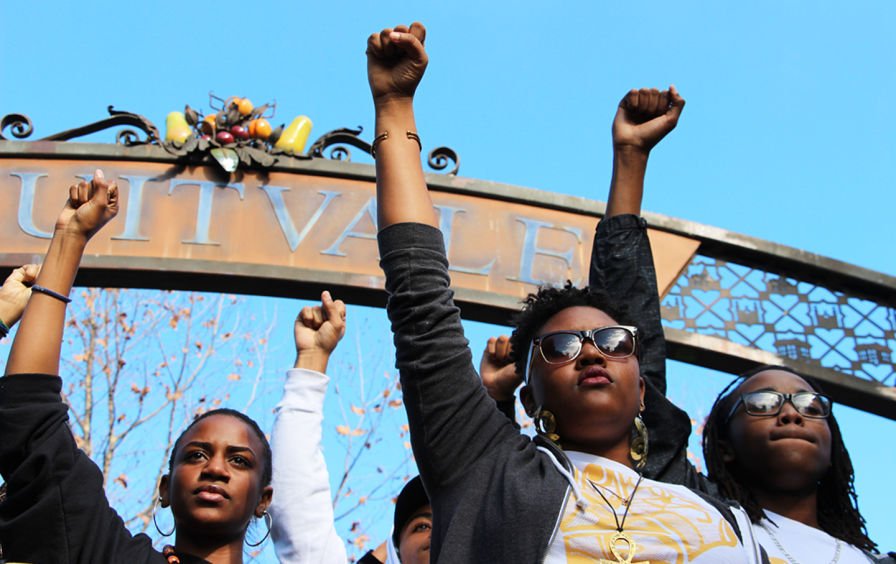What a Band of 20th-Century Alabama Communists Can Teach Black Lives Matter and the Offspring of Occupy
By Sarah Jaffe"When historian Robin D. G. Kelley began work in the 1980s on what would become his classic work of radical history, Hammer and Hoe: Alabama Communists During the Great Depression, he was surrounded by activism. There was an uprising against police violence in Liberty City, Florida; multiracial coalitions propelled Harold Washington to the mayor’s office in Chicago; and the presidential campaign of Jesse Jackson was gathering steam. As a young activist and campus organizer, Kelley was part of the movement that pushed the University of California system to divest from its holdings in South Africa, but he was also discovering a tradition of black radical organizing closer to home—that of the Communist Party in Alabama.Kelley’s dissertation on that subject became Hammer and Hoe, a book that explores what might have seemed to be a fairly esoteric topic yet offered lessons that activists have been drawing on for twenty-five years. Throughout that time, the book has remained in print, winning awards and, more important to Kelley, a place in the hearts and strategic thinking of decades of young organizers struggling with the questions of race, gender, class, and solidarity.In Hammer and Hoe, Kelley details in wonderfully vivid prose how black workers in Alabama made communism their own, blending the teachings of Marx and Lenin with those of the black church and the lessons of decades of resistance to slavery, segregation, and racist terrorism. They were sharecroppers and domestic workers, relief recipients and factory workers. They were men and women who had been denied access to “skilled” positions so that white men could take the jobs instead, and, through those experiences, had found their way to a radicalism that was international in scope but deeply local in practice.Those Alabama communists, Kelley notes, did not see their struggles for voting rights as separate from their struggles against economic exploitation by property owners, factory bosses, or the ostensibly progressive leaders of an unequal New Deal order. To be able to fight either of those struggles they had to challenge the racist terror of the Ku Klux Klan, often in collusion with the police, and to escape the clutches of a criminal legal system that locked up and executed black people based on the thinnest shreds of evidence. The trials of the Scottsboro Nine are in Hammer and Hoe, but so are the stories of many people who have been forgotten, who dared to stand up to injustice and paid with their lives.This summer, the University of North Carolina press published an updated, 25th-anniversary edition of the book. With a nod to the present moment, this edition comes with a new preface and a dedication to the young activists of recent years, whose fights against austerity, racism, militarism, and capitalism itself have echoed, consciously or unconsciously, the struggles of Kelley’s subjects.Kelley is currently the Gary B. Nash Professor of American History at UCLA. He sat for an interview with The Nation's Sarah Jaffe over this summer. Their conversation has been edited for length and clarity."
See the full interview here.

